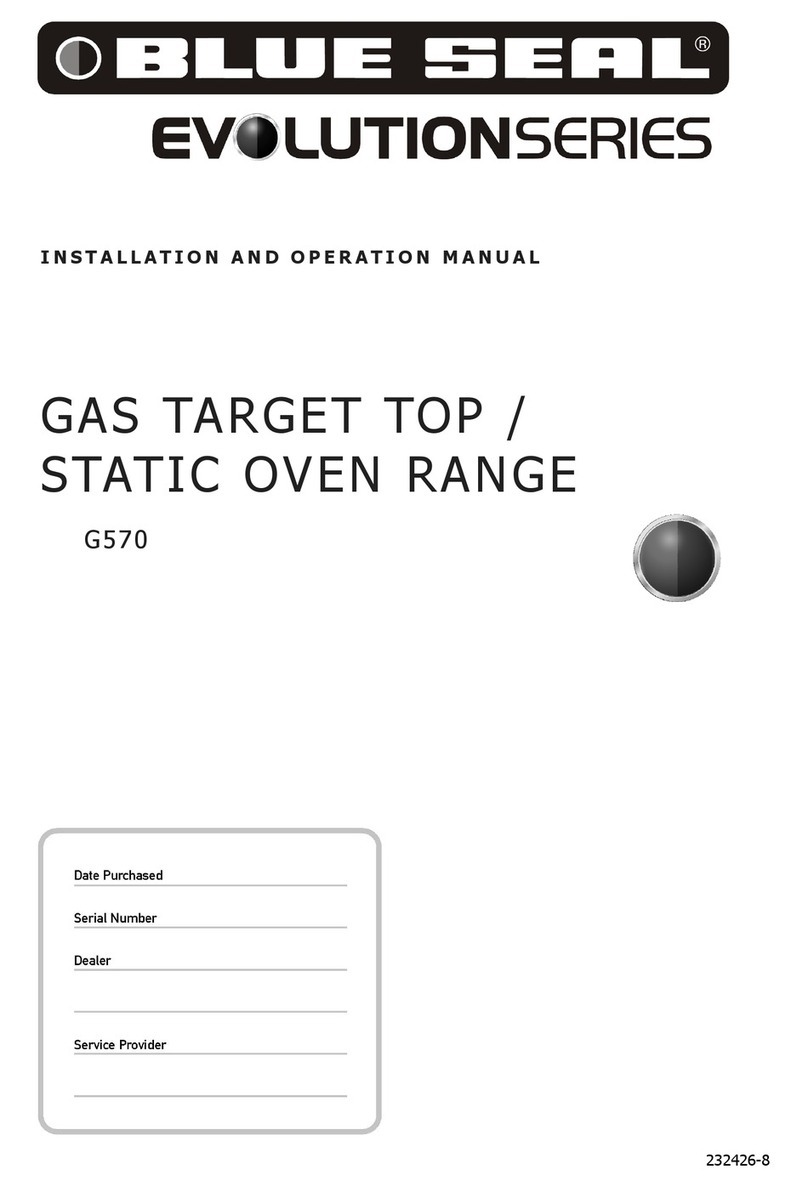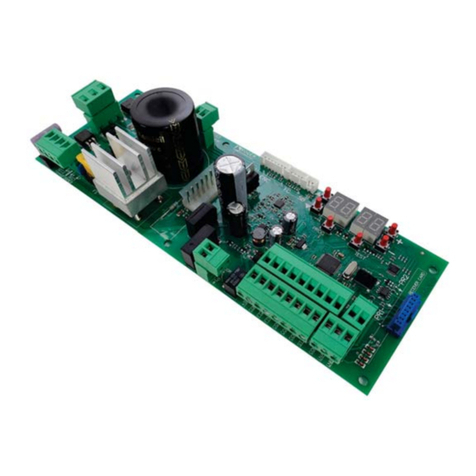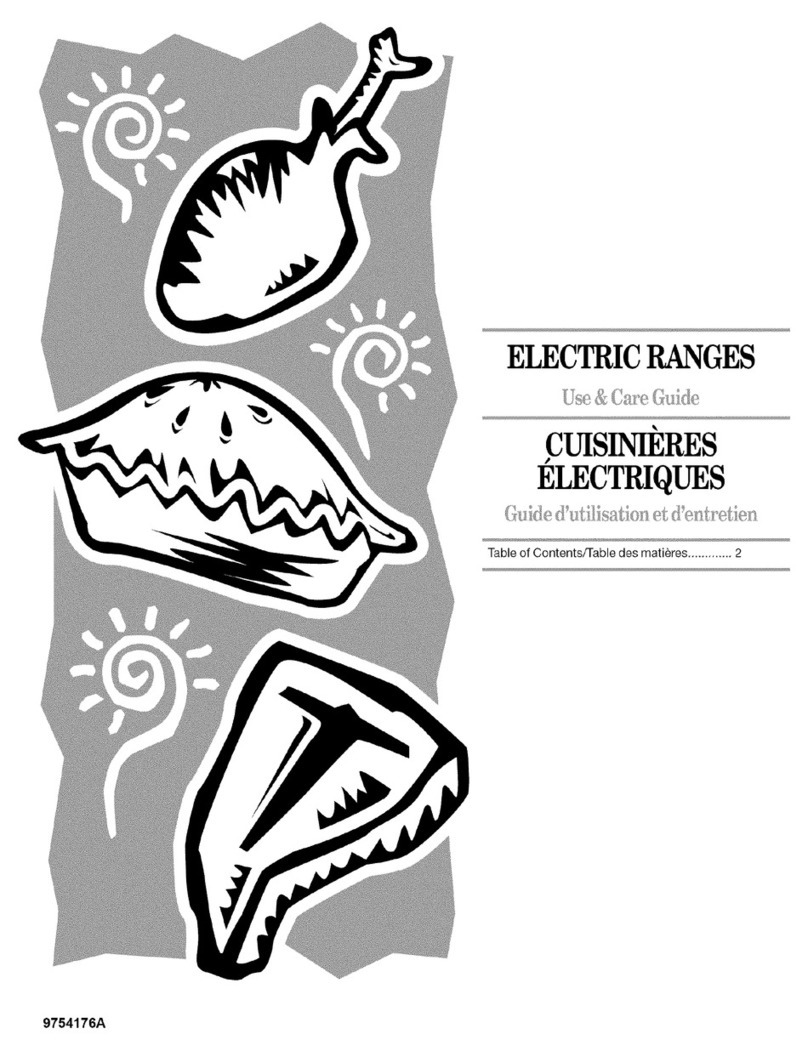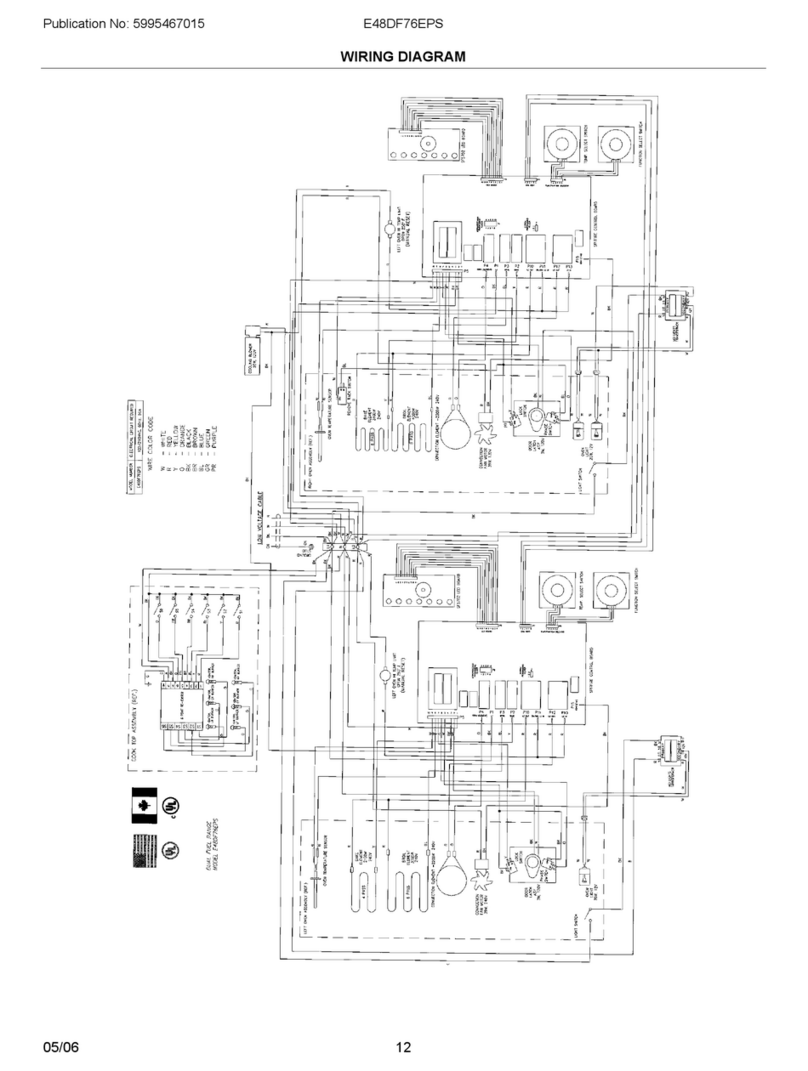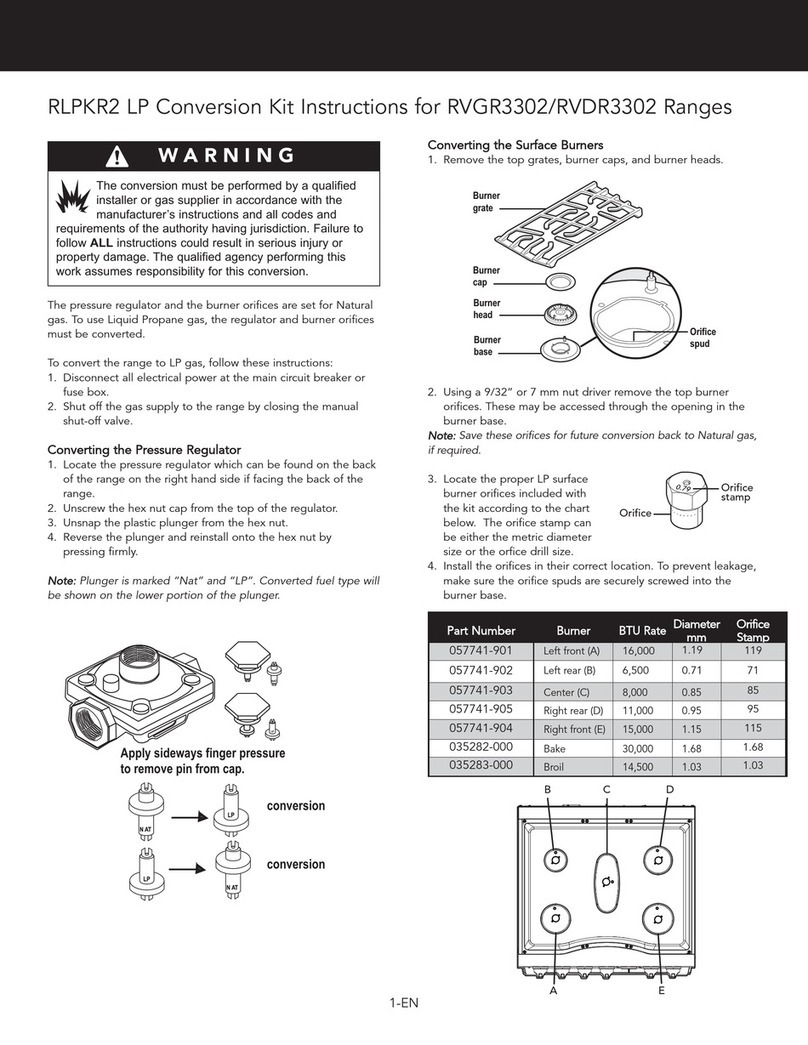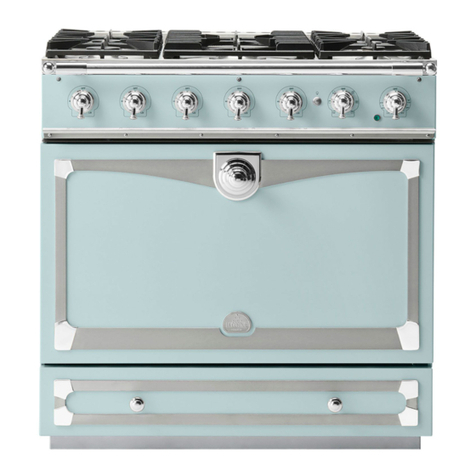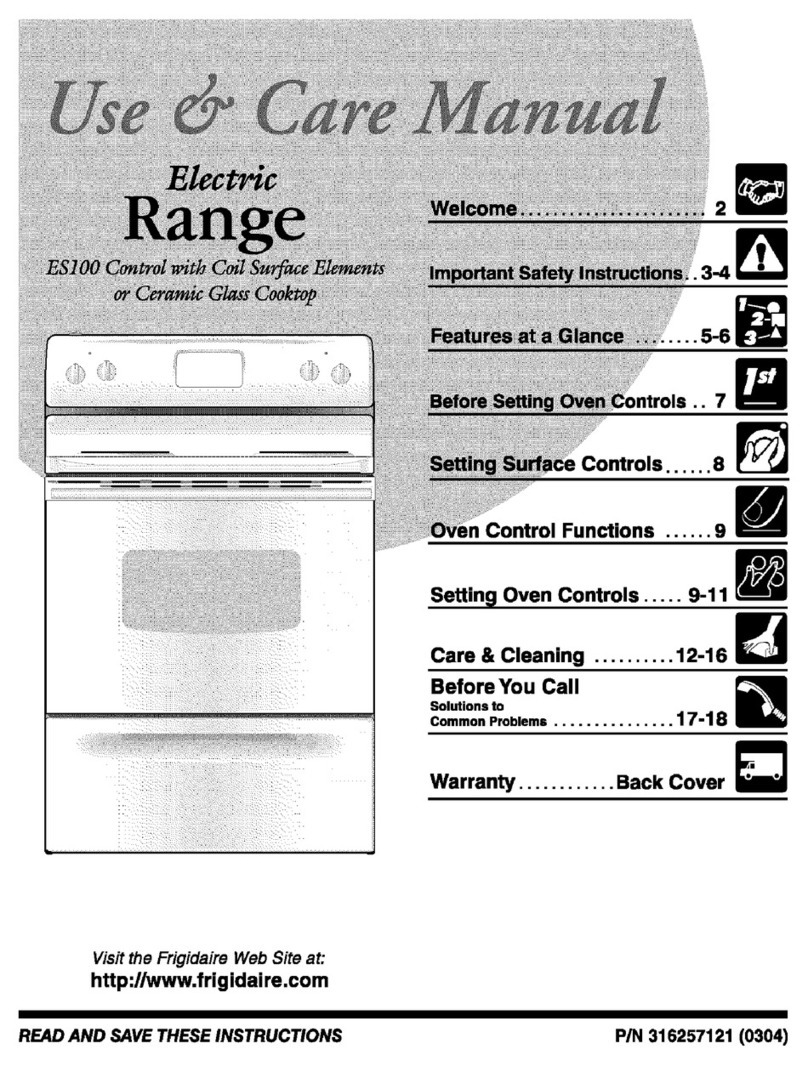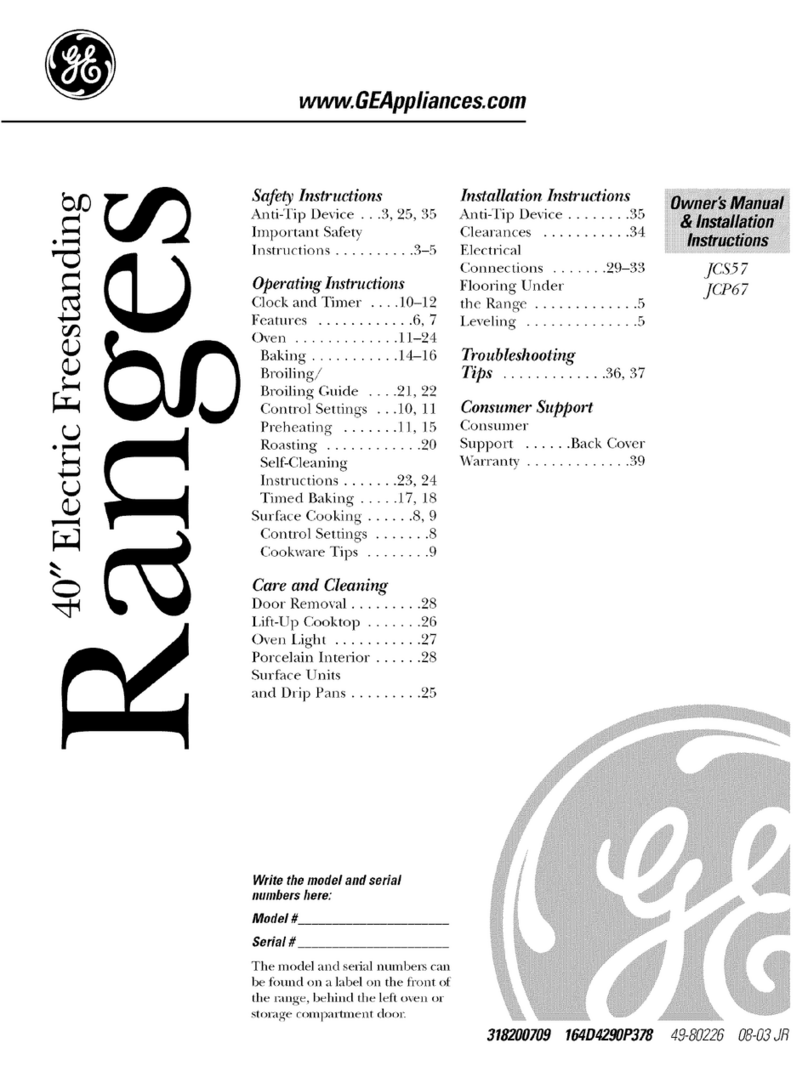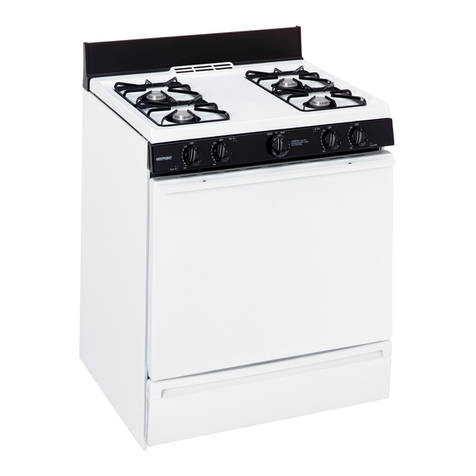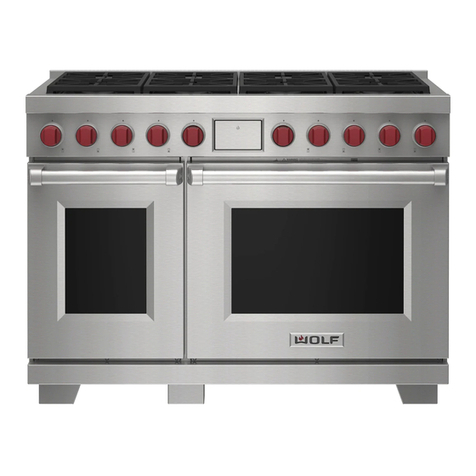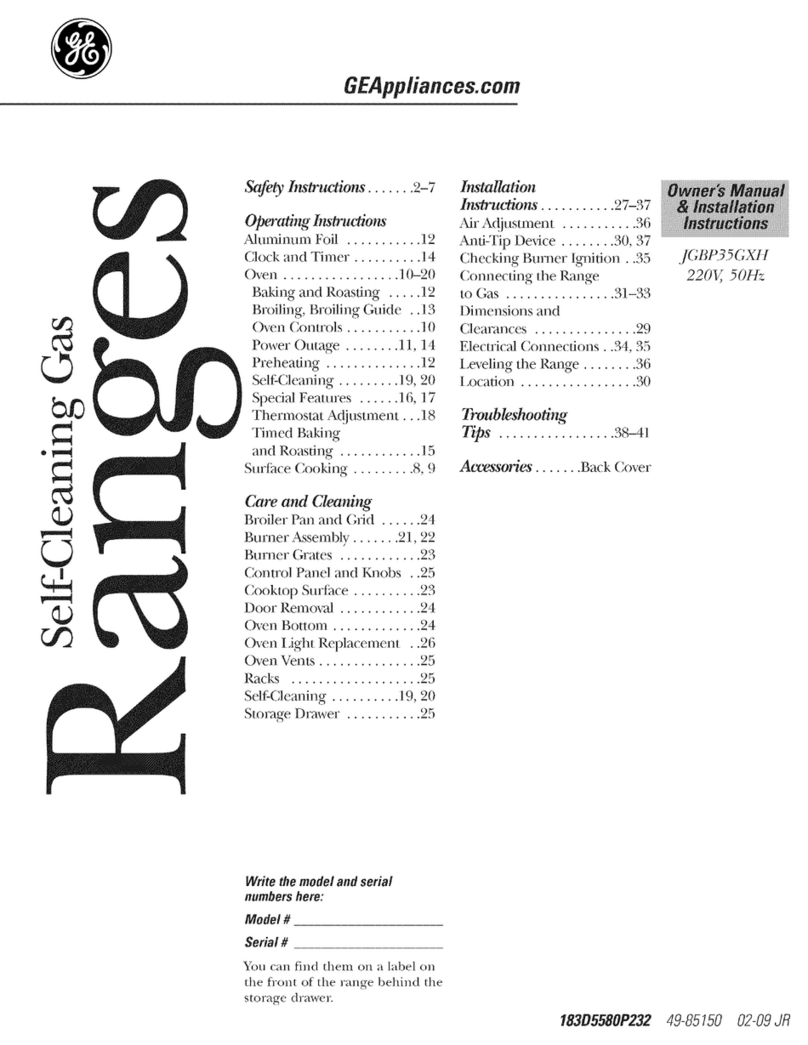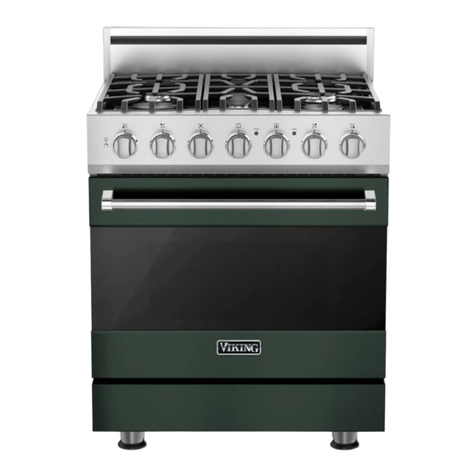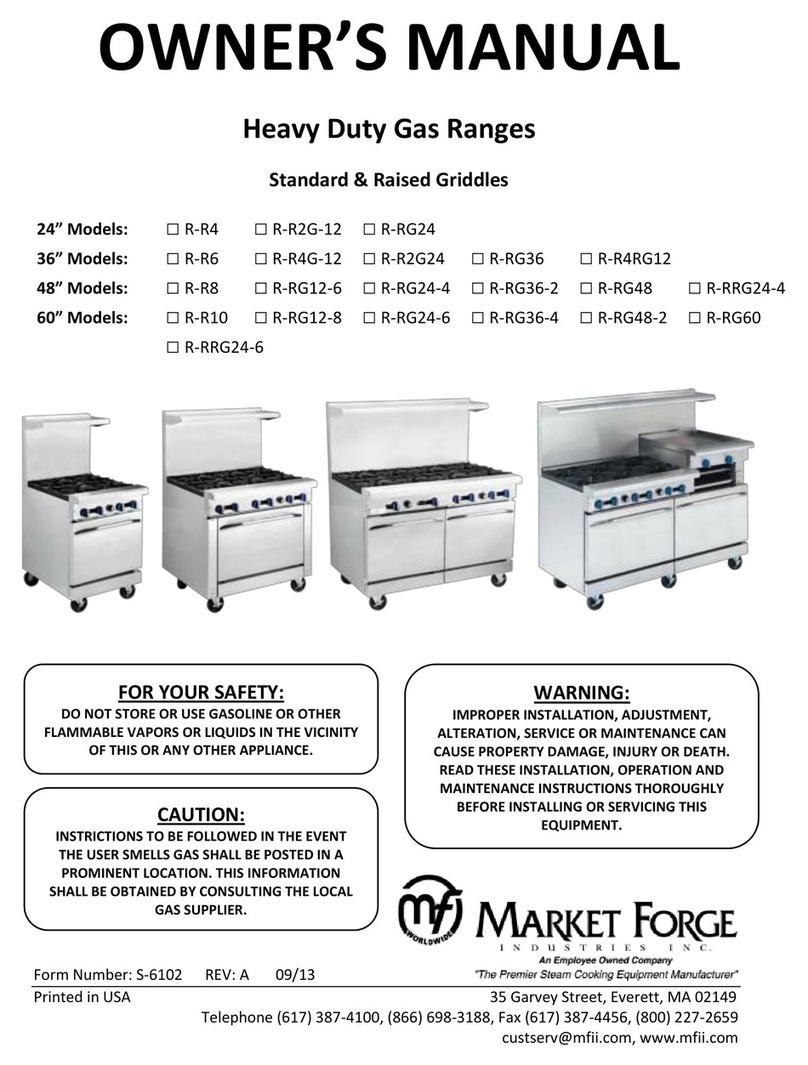
5INSTALLATION
Utility Connections
ELECTRICAL CONNECTION
Oven requires a 120 volt supply to operate the ignition
system and blower. The supply cord provided along with
the appliance is equipped with a three prong (grounding)
plug for protection against shock hazard. The electrical
service in the building must be equipped with a properly
grounded three prong receptacle, in accordance with lo-
cal codes, or in the absence of local codes, with the na-
tional electrical code, ANSI/NFPA 70-1987, in Canada,
conform with Canadian electrical codes, CSA-C22.1.
Do not cut or remove the grounding prong from this plug.
Wiring diagram is located on the backside of the appli-
ance.
Disconnect power supply before cleaning or servicing.
WARNING
This appliance is not capable of being oper-
ated in the event of power failure. No attempt
should be made to operate this appliance dur-
ing power failure.
GAS CONNECTION
The gas supply (service) line must be the same size or
greater than the inlet line of appliance. Oven uses a 3/4”
NPT inlet. Sealant on all pipe joints must be resistive to
LP gas.
Manual Shut-Off Valve
This installer-supplied valve must be installed in the gas
service line ahead of the appliance and regulator in the
gas stream and in a position accessible in the event of an
emergency.
Pressure Regulator
Gas pressure regulator provided with the equipment must
be installed when the appliance is connected to gas sup-
ply.
All commercial cooking equipment must have a pres-
sure regulator on the incoming service line for safe and
efcient operation, since service pressure may uctuate
with local demand. The pressure regulator comes with the
oven. Failure to install the pressure regulator will void the
equipment warranty!
The regulators supplied with MARKET FORGE INDUS-
TRIES, INC. Ovens, have 3/4” inlet /outlet openings and
are adjusted at the factory for 5” WC (Natural gas) or 10”
WC (Propane gas) depending on customer’s ordering in-
structions.
Prior to connecting the regulator, check the incoming line
pressure, as these regulators can only withstand a maxi-
mum pressure of ½ PSI (14”WC). If the line pressure is
beyond this limit, a step-down regulator will be required.
The arrow shown on the bottom of the regulator body
shows gas ow direction; it should point downstream to
the appliance. The red air vent cap on the top regulator is
part of the regulator and should not be removed.
Any adjustments to regulators must be made only by
qualied service personnel with the proper equipment.
Connections
Please check installer-supplied intake pipes visually and
/or blow them out with compressed air to clear any dirt
particles, threading chips, or other foreign matter before
installing a service line. When gas pressure is applied
these particles can clog orices. All connections must be
sealed with a joint compound suitable for LP gas, and all
connections must be tested with a soapy water solution
before lighting any pilots!
Flexible Coupling, Connectors and Casters
For an appliance equipped with casters the installation
shall be made with a connector that complies with the
Standard for Connectors for Movable Gas Appliances,
ANSI Z21.69 or Connectors for Moveable Gas Applianc-
es, CAN/CGA-6.16, and a quick –disconnect device that
complies with the standard for Quick Disconnect Devices
for Use with Gas Fuel, ANSI Z21.41, or Quick Discon-
nect Devices for Use with Gas Fuel, CANI-6.9. Adequate
means must be provided to limit the movement of the
appliance without depending on the connector and the
quick-disconnect device or its associated piping to limit
the appliance movement. Restraining devices may be at-
tached to the back frame/panel of the unit.
If legs or casters are not used, the unit must extend 2” be-
yond the front edge of a noncombustible curb or platform.
Broilers are for installation in non-combustible locations
only.
WARNING
Before lighting, check all joints in the gas sup-
ply line for leaks.
DO NOT USE AN OPEN FLAME TO CHECK
FOR LEAKS!
Putting an open ame beside a new gas con-
nection is extremely dangerous.











